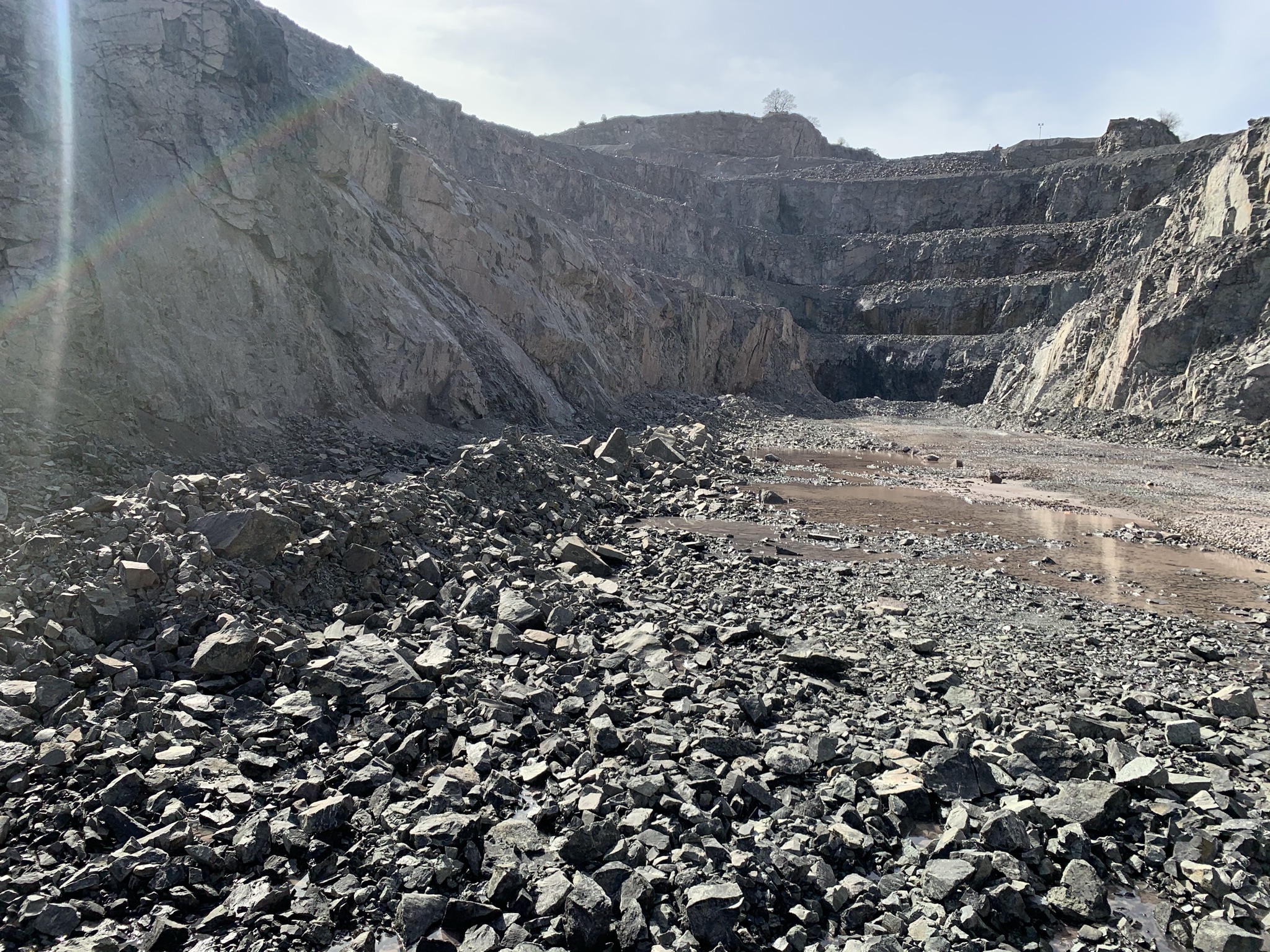Geology
Bayston Hill
The rock at Bayston Hill is somewhat unusual as it has not been significantly altered or structurally deformed over its long geologic history of around 570 million years.
The rock has special geology which makes it highly sought after for road surfaces due to its anti-skid properties. Bayston Hill Gritstones are rated as a 65 PSV (Polished Stone Value) meaning it is very good for high-speed road surfaces like motorways and A-roads.
The reserves of stone can be divided into two categories, Gritstone and Conglomerate.
Gritstone is the main mineral we quarry here and comprises of a medium to coarse ‘greywacke’ sandstone which has a high PSV with good resistance to wear and abrasion. The gritstone forms a vertical band through the centre of the quarry, trending South West to North East.
Conglomerate refers to rock that is not suitable to be used in the production of high PSV aggregate but can still be quarried for other uses. This type of rock predominantly forms a vertical band on the right-hand side of the quarry if viewing from the entrance. Another conglomerate band occurs on the North West side of the quarry, as well as in other areas due to a complex series of faults.
The approximate split between gritstone and conglomerate within the quarry reserves is three parts gritstone to one part conglomerate.
On top of the rock sits what is called the ‘overburden’. This comprises of superficial clays, silts and sands, along with Carboniferous shale which needs to be removed before excavation of the rock can begin.
